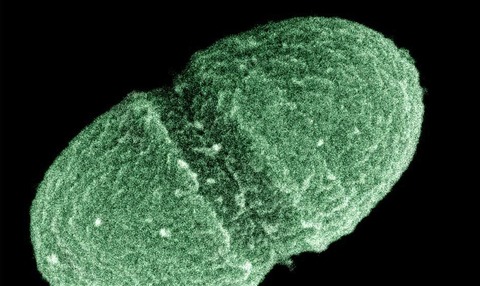
The first detailed studies describing the diversity, variety and function of microbes in humans have been released.
The Human Microbiome Project (HMP) Consortium, a five-year collaboration between dozens of other multidisciplinary research institutions, has set out to build a foundation for understanding how microorganisms coexist with their human hosts.
To do so, scientists have developed molecular tools and applied standardised protocols, generating vast amounts of data, developing new analytical methods to understand these data, and identifying the microbiome's most elusive organisms for whole genome sequencing.
Now a series of 14 scientific publications from the consortium, two appearing June 14 in Nature and 12 in Public Library of Science journals, for the first time answer two fundamental questions about the microbiota that healthy humans carry: Who's there and what are they doing?
"Just as the Human Genome Project was 10 years ago, the Human Microbiome Project is intended to be a baseline for future studies of human health and disease," said Dirk Gevers, a Genome Sequencing and Analysis Program group leader at the Broad Insitute of MIT.
"This is a tremendous resource that is now publicly available to the scientific community that allows us to ask how and why microbial communities vary."
For the effort, samples were obtained from up to 18 different body sites targeting five main body areas. These samples were donated by 242 healthy people ranging from 18 to 40 years old and living around Houston or St. Louis.
Traditionally, scientists have studied bacteria by culturing them in laboratory dishes, which is known to miss less abundant and hard-to-grow bacteria.
Instead the HMP scientists isolated DNA directly from the more than 5,000 samples collected from the healthy subjects.
Their first goal was to determine what microbes were present and how many of them there were. They did this by sequencing the 16S ribosomal RNA gene, a specific gene shared by all bacteria but not by humans, providing the equivalent of a barcode that can be used to identify and count the microbes present.
Once that daunting challenge was met, they would also sequence all of the DNA from all of the bacteria in a sample to create what is known as a metagenome sequence, based on data from millions of small sequences.
By sequencing all the genes in a microbial community in this way, the scientists could decipher their metabolic capabilities.
The microbiome metagenome is thought to contain 8 million different protein-coding genes, or 360 times as many as found in the human genome, which contains a relatively slight 22,000 protein-coding genes. New methods were needed to assign identity and function to these metagenome data.
"Big science is hard. Metagenomic science is hard. And metagenomic, big science is the square of hard," said Doyle Ward, a scientist at the Broad Institute and co-author of both Nature papers. "We were sequencing large numbers of highly variable, highly complex samples at different institutions and there's no roadmap for doing that."
The next challenge is to harness this information by embarking on studies that explore how the microbiome affects illnesses such as inflammatory bowel disease or type 1 diabetes.

